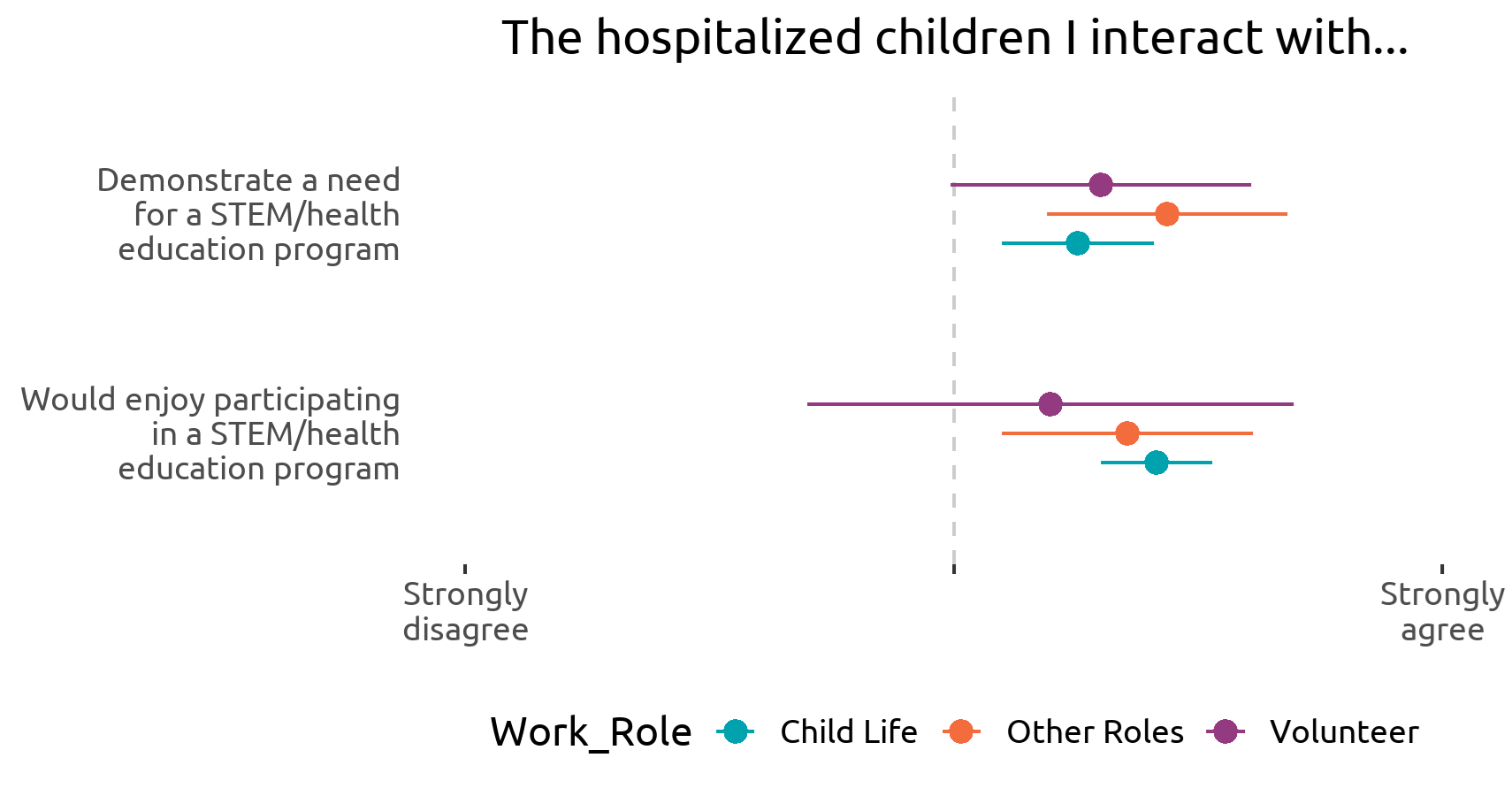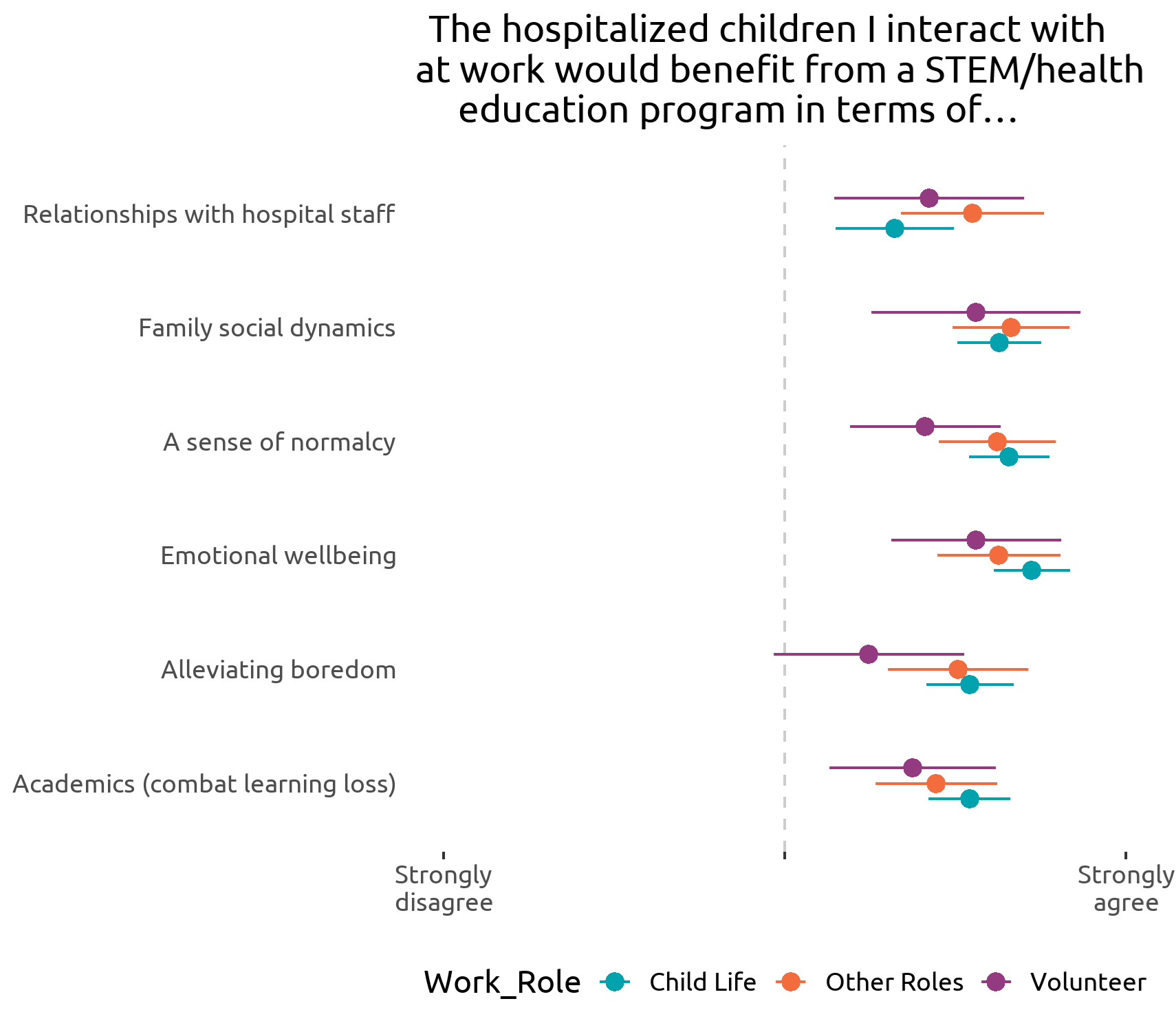Reducing Barriers in Informal STEMM Education
A new program brings high-quality STEMM learning opportunities to hospitalized children and their families.
The last few decades have witnessed the steady expansion of science, technology, engineering, mathematics, and medicine (STEMM) learning programs into non-traditional learning spaces – including libraries, museums, parks, community centers, summer camps, churches, youth organizations, and homes. A growing body of research shows that out-of-school time (OST) STEMM programs can be incredibly beneficial. Among other things, these programs have been linked with increases in content knowledge and achievement, improved perceptions of STEMM careers, stronger STEMM career aspirations, greater STEMM persistence in the face of academic and/or social obstacles, and broader participation, recruitment, and retention of young people – particularly under-represented youth – in various STEMM professions. These achievements speak to the importance of informal STEMM learning programs and the role they can play in closing STEMM participation and achievement gaps.
Hospital-Based STEMM Education Programs
Yet despite the success of the informal STEMM learning movement, opportunities for further growth abound. Hospitals are among those sites that have only recently begun to introduce STEMM educational programs for children whose illnesses require prolonged absence from school. While the literature on this subject shows that hospital-based education can “transform the negative and harmful experience of a child’s medical condition into a formative and empowering voyage through life,” interventions of this sort are generally in short supply.
There are reasons for this. For one, given the varying lengths of their hospital stays, creating anything resembling a classroom setting within the hospital is often impossible. Second, the frequently painful, stressful, and tiring medical interventions children experience during periods of hospitalization can undercut their motivation and interest in learning. Third, hospitals looking to offer children meaningful educational experiences have often encountered obstacles related to time, money, hospital politics, and administrative recognition and support. All of these factors make it difficult for hospital staff to attend to the learning needs of the children in their care.
Science Journeys
In support of efforts to build new pathways for hospital-based education, in Fall 2022, a project called “Science Journeys” was launched by the Children’s National Research Institute. Supported by the National Institutes of Health (SEPA Grant #: R25GM146282-01), Science Journeys provides high-quality STEMM educational opportunities to children (and their families) in grades K-8 who are receiving inpatient and outpatient care. The project’s curriculum is based on an earlier STEMM learning program called “Discover SCIENCE with Dr. Bear,” and it revolves around a series of hands-on learning activities that aim to increase children’s STEM literacies, to improve their physical and mental health, and to equip them with the skills and tools needed to promote agency in their personal health journeys. In all of these ways, Science Journeys seeks to remove some of the barriers that prevent hospitalized youth from engaging with STEMM learning activities and acquiring valuable knowledge about a variety of STEMM-based concepts, technologies, and occupations.
Science Journeys is currently in its third year, and implementation is underway on several different floors and units throughout Children’s National Hospital. The program is being offered in a variety of formats – as one-on-one bedside activities, as group activities in common areas, and even as a televised broadcast that patients can watch in their rooms. In addition to this, youth can also participate in Science Journeys through activity bags made available to individual patients and family members.
Evaluating the Project
As the external evaluator of Science Journeys, we’ve been assessing its impacts by gathering feedback from a variety of different stakeholders – including program facilitators, hospital professionals and volunteers in and outside of Children’s National Hospital, and the caregivers of children who have participated in the program. Given all of the obstacles hospital-based education programs have to contend with, one of our key goals has been to determine the prospects for initiatives like Science Journeys – that is, to discover the extent to which Science Journeys aligns with the perceived needs, interests, and concerns of its target audiences. How beneficial might such programming be for hospitalized youth and their families, and what are the positive impacts it might have?
To address this question, we surveyed a variety of hospital workers – including child life specialists, nurses, hospital educators, medical specialists, music and art therapists, and volunteers. The survey offered an opportunity for those who work with young patients on a daily basis to share their thoughts on how beneficial STEMM-based learning activities would be for the children in their care. A total of 66 individuals responded to the survey.
What Are We Learning?
Needs and Interests
Whether working within Children’s National Hospital or at other hospitals around the country, those who responded to our survey were of one mind as to the importance of projects like Science Journeys. Indeed, as the figure below shows, hospital workers agreed that the children they interact with both needed and would enjoy participating in STEMM educational programs. This suggests that Science Journeys may help break down some of the barriers that prevent hospitalized children from gaining access to high-quality STEMM learning during periods of prolonged absence from school.

Perceived Benefits
Hospital workers also thought that the benefits of hospital-based STEMM educational programming could be fairly widespread. As the figure below indicates, they agreed that projects like Journeys could help hospitalized youth in terms of their relationships with hospital staff and family members, their emotional wellbeing, their sense of agency and normalcy, and their academic performance.

Many also thought that Journeys could fill gaps in children’s learning. One hospital worker noted that “because my patients are chronic, they sometimes don't have access to school in the same way that other kids do, and are quite behind with it.” But STEMM educational activities, another said, “could be really helpful in supplementing some of the knowledge gaps and opportunities for learning and for fun that patients don't otherwise get while they're [in the hospital].” Some highlighted specific kinds of STEMM-related educational benefits. Noting that many patients complain about “getting woken up at 6 AM” to have their blood pressures taken, one hospital worker mentioned this as an example of the kinds of topics hospitalized youth would appreciate learning about. “To learn why” this procedure is performed every morning, they shared, “would be actually really cool.”
Let’s Put it to Work!
Our evaluation of Science Journeys points to both the need for hospital-based STEMM education and the potential benefits this can have. And as the implementation of Science Journeys suggests, in order to overcome the various obstacles informal STEMM programs encounter in this particular setting, it’s important both to provide children with a variety of opportunities to participate in learning activities and to customize these activities in ways that allow them to be adapted in different hospital contexts. By developing the professional and personal relationships required for broad-based implementation, those interested in giving youth more informal learning opportunities can work to ensure continuity in children’s academic pursuits even when their illnesses require prolonged absence from school.
About This Article
This article is part of our ongoing evaluation of the informal STEMM learning programs created by Children’s National Research Institute. To learn more about how we’ve worked with Children’s over the years, see our partnership landing page. For findings from earlier evaluations of the Institute’s work, see our blog posts on “Discover SCIENCE with Doctor Bear” – including our overview of this project and our investigation into its role in breaking racial barriers in STEMM education
Photo by Kristine Wook @Unsplash